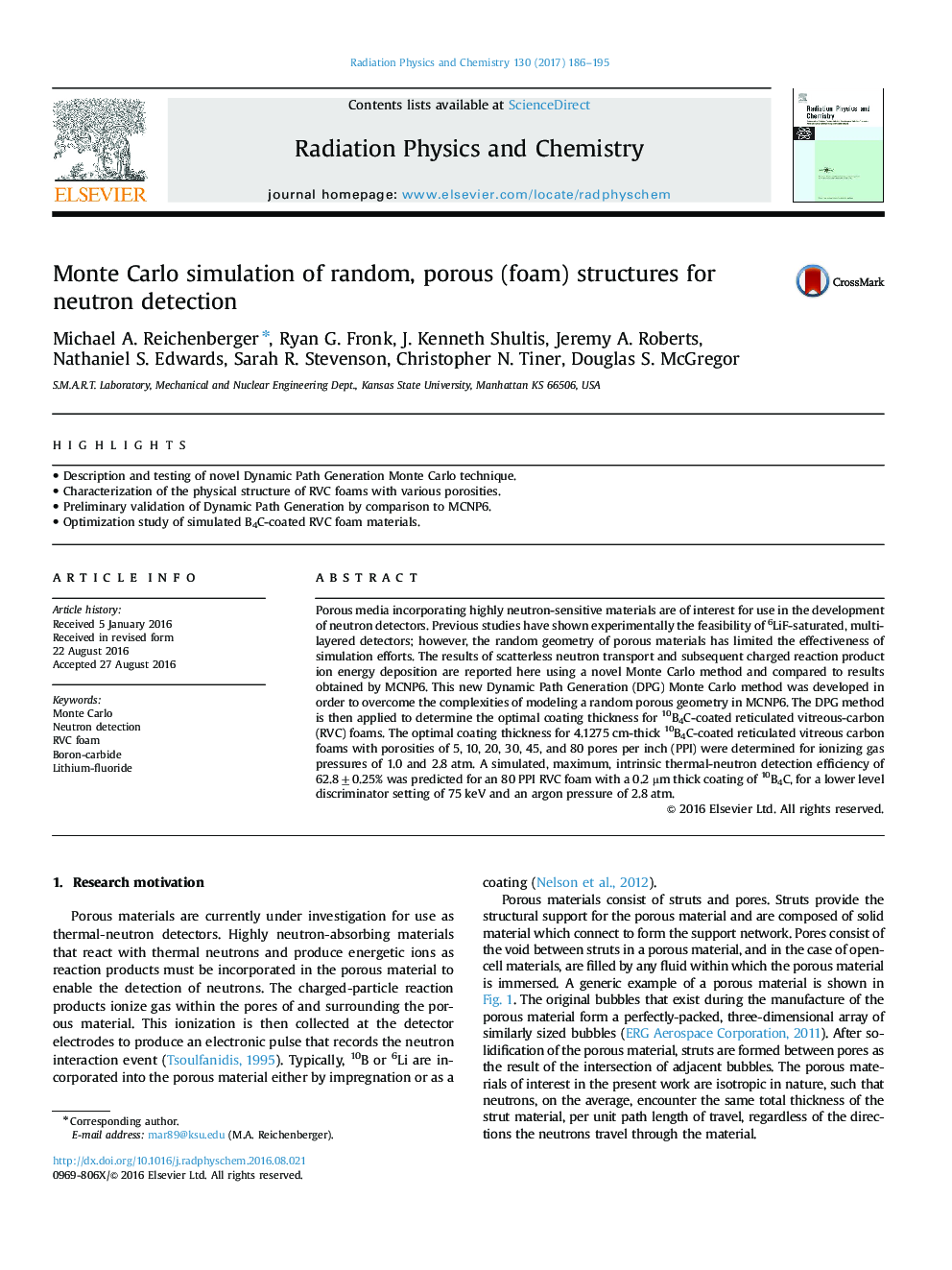| Article ID | Journal | Published Year | Pages | File Type |
|---|---|---|---|---|
| 8251914 | Radiation Physics and Chemistry | 2017 | 10 Pages |
Abstract
Porous media incorporating highly neutron-sensitive materials are of interest for use in the development of neutron detectors. Previous studies have shown experimentally the feasibility of 6LiF-saturated, multi-layered detectors; however, the random geometry of porous materials has limited the effectiveness of simulation efforts. The results of scatterless neutron transport and subsequent charged reaction product ion energy deposition are reported here using a novel Monte Carlo method and compared to results obtained by MCNP6. This new Dynamic Path Generation (DPG) Monte Carlo method was developed in order to overcome the complexities of modeling a random porous geometry in MCNP6. The DPG method is then applied to determine the optimal coating thickness for 10B4C-coated reticulated vitreous-carbon (RVC) foams. The optimal coating thickness for 4.1275 cm-thick 10B4C-coated reticulated vitreous carbon foams with porosities of 5, 10, 20, 30, 45, and 80 pores per inch (PPI) were determined for ionizing gas pressures of 1.0 and 2.8 atm. A simulated, maximum, intrinsic thermal-neutron detection efficiency of 62.8±0.25% was predicted for an 80 PPI RVC foam with a 0.2 µm thick coating of 10B4C, for a lower level discriminator setting of 75 keV and an argon pressure of 2.8 atm.
Keywords
Related Topics
Physical Sciences and Engineering
Physics and Astronomy
Radiation
Authors
Michael A. Reichenberger, Ryan G. Fronk, J. Kenneth Shultis, Jeremy A. Roberts, Nathaniel S. Edwards, Sarah R. Stevenson, Christopher N. Tiner, Douglas S. McGregor,
